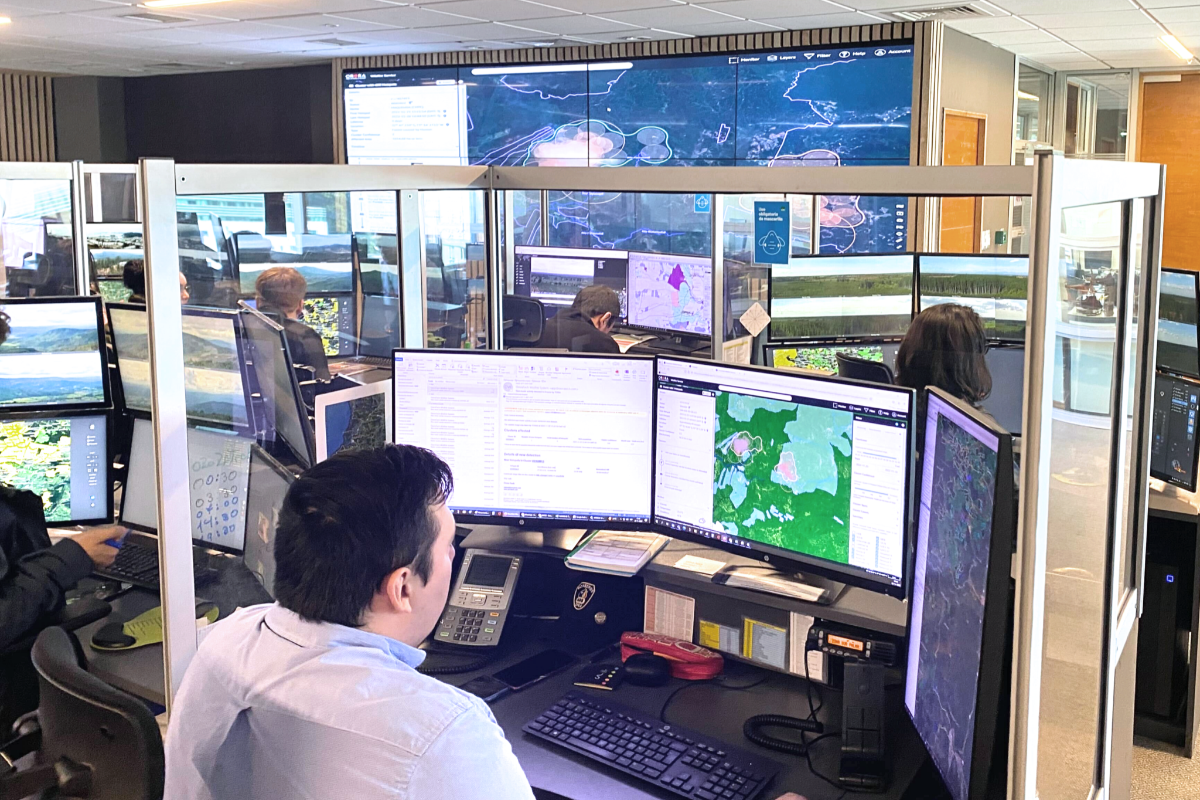News - May 15, 2025
The Rise of Natural Disasters Linked to Global Warming; Our Solutions:
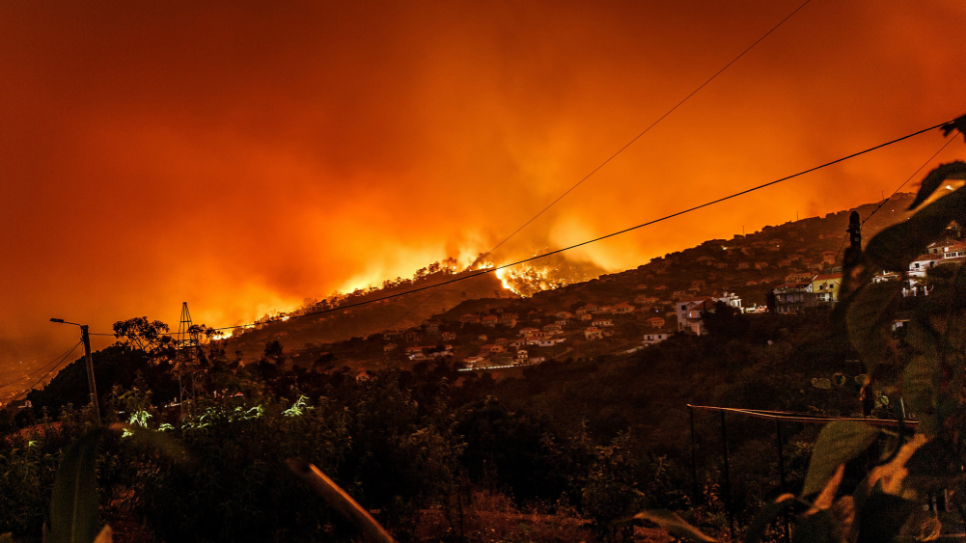

Written by Solar Impulse Foundation 7 min read
BNP Paribas Solar Impulse Venture Fund’s Invest Millions in Orora Tech’s Wildfire Solution
With climate change amplifying extreme weather events, our ability to anticipate and respond with innovative solutions has never been more essential:
Spain, October 2024: Severe floods:
Over 200 lives lost
60,000 homes damaged or destroyed
3.76 billion euros in addition to a previous 10.6 billion euros package have been allocated to help with reconstruction
California 2024-2025, Wildfires:
12,300 structures destroyed
200,000 residents displaced
At least 24 lives lost
These events and their rise in frequency can mainly be linked to the impacts of global warming. We live in a time where technology will be strongly required to help us prepare and protect against these events to minimize their menace and destruction.
Guided by its mission to accelerate the transition to a safer and more sustainable world, The BNP Paribas Solar Impulse Venture Fund has recently led a $37M financing round for German company OroraTech in association with Rabo Ventures, Bayern Kapital, Edaphon and the ECBF (European Circular Bioeconomy Fund). These investments aim to support OroraTech's mission to reduce wildfire risks and damages. OroraTech’s Wildfire Solution has developed an advanced monitoring system that enables a quick and appropriate response against wildfires. OroraTech possesses 10 satellites in orbit that provide a persistent and comprehensive thermal data stream, allowing a precise global understanding of any wildfire event and accurately simulating future fire behaviour.
Lucas Guillet, Investment Director at BNP Paribas Solar Impulse Venture Fund, stated:
"We are pleased to support OroraTech, which has established a strong reputation in the space industry and wildfire management ecosystem. Their ability to design and operate nano-satellites, as well as interpret complex data, has contributed to the commercial success of their Wildfire Intelligence solution. Our network along with Rabobank offers a promising chance to support solutions that can improve forest protection globally, a mission that aligns perfectly with our fund’s investment thesis."
The OroraTech Mission explained:
More about the BNP Paribas Solar Impulse Venture Fund
Understanding Disasters to Drive Solutions
As the Summer season approaches, many rejoice at the idea of spending time enjoying long sun-filled days by the water. Yet, this same season growingly brings heightened environmental challenges linked to higher temperatures, dry conditions and heavy storms. The combination of these factors tends to stimulate the dangers of extreme events like wildfires, heat waves, floods and droughts. We therefore believed it beneficial to give you an insight on the origin of natural disasters and what solutions might exist to reduce their impact.
Wildfires and Summer Extreme Weather
A wildfire burns uncontrollably and can spread rapidly in times of dry vegetation, high temperatures, low humidity, and strong winds. Forests and savannas, with their dry trees and grasses, are especially susceptible to wildfires, but they are far from the only areas threatened. The danger of wildfires is their ability to spread to populated areas and the difficulty of containing them. Wildfires can start from natural causes (a lightning strike), but also from human error:
Maui, Hawaii, 2023: the fire started in a dry grassland outside populated zones, but strong winds drove the fire to expand into the district of Lahaina, killing approximately 100 people and destroying a majority of the town center.
Hydra, Greece, 2024: A firework was ignited by a crew on a yacht surrounding the island and blazed through 300 acres of a pine forest .

Heat Waves and Climate Change
A heatwave is a prolonged period (at least 3 days) of excessively hot weather, often accompanied by high humidity, especially in coastal areas. The number of heatwaves has increased in the last few years, mainly due to global warming but also because of increasing urbanisation: cities absorb and re-emit more heat than rural areas, turning them into “heat islands”. The changing weather patterns have also caused a shift in jet streams and pressure systems, making some areas more prone to stagnant, hot air masses.
Impacts:
Europe, 2003: a heat wave caused around 30,000 deaths.
Europe, 2022: 2022 saw a drop of 15-20% of maize, soybean, and sunflower yields in Europe due to extreme temperatures, causing an increase in food prices.
Western Australia, 2025: In January 2025, 30,000 fish likely died due to an ocean heatwave that caused prolonged thermal stress on the marine fauna.
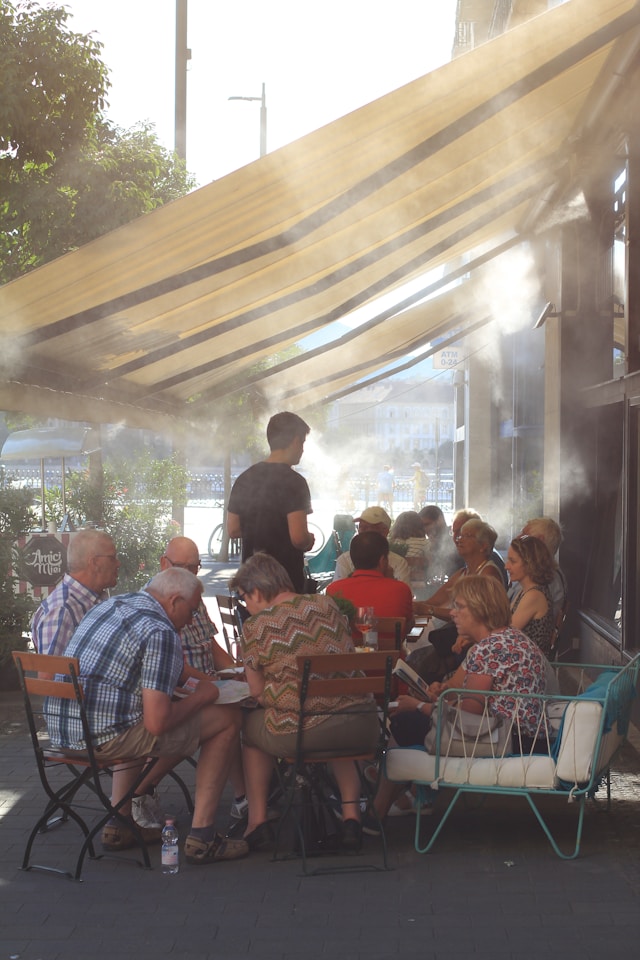
Floods and Rising Exposures
Floods are among the most frequent and destructive natural disasters. Floods occur when land that is normally dry suddenly or gradually floods with water after a heavy rainfall, river overflows, storm surges, or the failure of dams. Floods are often followed by landslides (sudden movement of rock, soil and debris down a slope), which further aggravate the damage caused by the flooding. Intense storms tend to be more frequent in Summer, which increases flooding menaces.
Global figures:
Approximately 1.47 billion people worldwide are at risk of intense flooding.
Floods have caused the displacement of over 20 million people in 2023.
In the last 30 years floods has caused cumulative global losses exceeding $1.2 trillion.
Storm Daniel in Libya 2 years ago resulted in the loss of almost 6,000 lives due to extreme flooding.
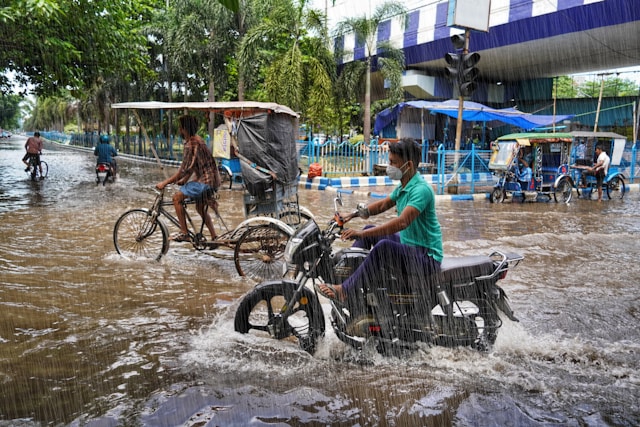
How Global Warming and Natural Disasters Are Connected
Here are 5 facts that illustrate the link between global warming and natural disasters:
The global average temperature has risen to 1.58 degrees Celsius above pre-industrial levels.
The frequency of weather-related disasters has increased significantly: over 90% of natural disasters are now weather and water-related.
Between 2000 and 2016, the number of people exposed to heatwaves rose by approximately 125 million, largely due to climate change.
The extent of coastal flooding has increased over the past 20 years due to sea-level rise, with 14 million more people now living in areas with a 1-in-20 annual chance of flooding.
Climate Change has doubled the number of wildfires between 1984 and 2015 in the Western United States.
These numbers can be explained as follows: for every 1 degree Celsius of warming, the atmosphere holds about 7% more water vapor, leading to heavier and more frequent rainfalls, causing floods and landslides. Higher temperatures evaporate moisture from soil and plants faster, resulting in longer droughts and ideal fuel for wildfires. As oceans warm, storms become more intense, with stronger winds and heavier rainfall, which makes coastal areas much more vulnerable to storm surges and flooding during storms. Rising global temperatures directly cause more frequent and extreme heat waves, leading to health crises and infrastructure damage.
Simply put, as global temperatures rise, extreme weather events grow in both frequency and intensity. As the regularity and severity of natural disasters continue to grow, it becomes increasingly clear that reactive measures alone are no longer sufficient. To safeguard lives, ecosystems, and infrastructure, we must invest in innovative technologies and proactive resilience strategies. By anticipating risks and strengthening our defences, we can transform today’s challenges into opportunities for a safer, more sustainable future.

Mitigation measures to Reduce Natural Disasters caused by Climate Change
There are two main types of measures that are currently used to fight global warming and its associated challenges of natural disasters: mitigation and adaptation measures.
Mitigation measures aim to reduce or prevent the causes of national disasters by inhibiting climate change itself using the following practices:
Reducing Greenhouse Gas emissions
The Moroccan Noor Solar Complex is a solar farm located in the Sahara Desert, covering over 30 km2, that contributes to a reduction of an estimated 760,000 tons of CO2 emissions annually to achieve Morocco’s goal of producing 52% renewable energy in its electricity mix by 2030.
Reforestation and Nature Restoration
China’s reforestation programs aims the plantation of over 70 million hectares of forest by 2030. Through this program, China's land is now covered by 25% of forest that acts as an efficient carbon-fixer.
Climate-Friendly Urban Planning
Singapore has over 7 million trees in urban areas, which reduce temperatures by up to 4 degrees Celsius in city zones compared to non-green parts.

Adaptation Measures to Protect Against Natural Disasters
Adaptation measures are meant to protect regions to reduce the impacts of potential natural disasters through physical, social, and ecological systems. Here are a few examples:
Tide Barriers, and mangrove restorations to protect coastlines from rising seas and storm surges
The Thames Barrier in London shields the city from storm surges during high tides.
Indonesia plans to restore 600,000 hectares of mangroves to absorb wave energy, protect coastal areas and store carbon naturally.
Urban designs adapted to ensure higher resistance against extreme challenges
China is estimated to invest EUR 1 trillion by 2030 in it’s Sponge City Program (SCP) that will integrate natural rivers, wetlands, green roofs and rain gardens in urban areas aiming to mitigate flood risks, improve water quality and enhance urban resilience. Similar approaches are being pursued in Berlin and Hamburg, Germany.
New York City’s Cool Roofs Program paints rooftops white to reflect heat and cool buildings by up to 30%.
Early detection and monitoring technologies to identify wildfires early and react quickly
NASA' FIRMS (Fire Information for Resource Management System) monitors global wildfire activity in real-time.
Between 2021-2022, global adaptation finance (funds dedicated to developing adaptation measures) reached an all-time high of $63 billion. Although being an impressive figure, it isn’t sufficient. The UNEP (United Nations Environment Programme) estimates that developing countries need around $215-387 billion per year by 2030 to properly adapt to climate change, meaning being able to protect infrastructure, food systems or cities. In addition to government and public initiatives, innovative private-sector solutions are also pushing to make a difference and fill the gaps. More about that in the next section…
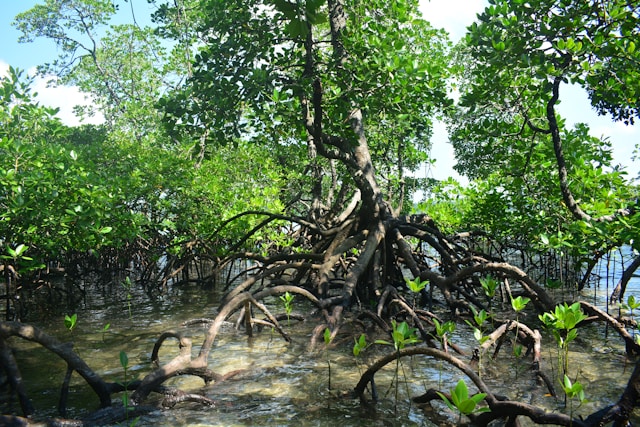
How can Solar Impulse Foundation’s labelled solutions make a difference?
To maximize the chances of limiting damages caused by natural disasters, the Solar Impulse Foundation has labelled several solutions that have already shown potential. We have regrouped a few that might be of interest to you:
Protection against wildfires:
In complement to OroraTech’s Wildfire Solution, Dryad Silvanet by Dryad Networks also aims to counter wildfires effectively through precise monitoring and sensor technologies enabling a rapid response. Since 2023, Dryad Networks has collaborated with Vodafone in Spain to reduce the percentage of area devastated by fire.
The GFN (Ground Fault Neutralizer) by Swedish Neutral is a protection system aimed at minimising the risk of fires, injuries, and damages caused by power lines, enabling the maintenance of a safe power supply without any power outages. The GFN can neutralise power lines' single-phase to ground faults ultra-fast before they ignite a fire, where traditional protection is too slow and cannot prevent ignition.
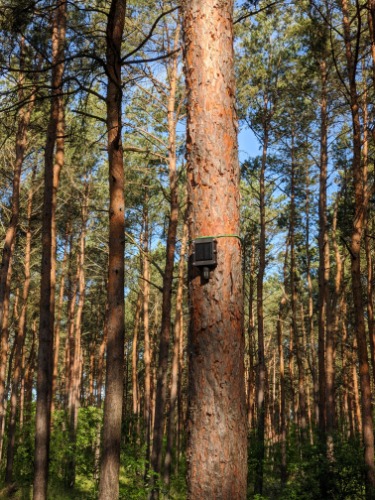
Obloc by Ausec is a product that was developed with the intention of protecting houses against flooding. The Obloc is a lightweight, thin-looking bag that can increase its volume by 2400% when activated in contact with water in order to reduce damage and waste caused by floods. The solution is composed of 87% recycled products that are reused to reduce the waste generated following a flood.
The SRS (Smart Rainfall System) by Artys Srl helps predict the risks of flash floods in urbanised areas. It allows a fast and detailed evaluation of the flood exposure level expected locally in the territory using innovative IoT sensors and advanced risk-analysis modelling. The typical space resolution of the SRS rainfall maps is 100m, 5 times finer than the mainstream alternatives.
The Hydrodynamic Flovalv by F-Reg combats flooding and pollution caused by overflowing sewer systems. The Flovalv enables the usage of sewer pipes as a storage area to regulate peak flows of stormwater, limiting the damage caused by overflows. This solution is much less costly than a retention tank and reduces the use of land (1 valve = 25m2 of land saved).
In addition, the IOT Flood Alert by OgoXe monitors real-time water levels giving stakeholders useful updates on the situation. It is solar-powered which makes the device unaffected in case of electrical power shortage.

Protection against heat waves:
SageGlass by Vetrotech Saint-Gobain International AG electronically tints to adapt to the daylight and heat providing optimal conditions in a building and a protection against heat waves. This technology was adopted by Schneider Electric in Grenoble and provided optimal and safe conditions to employees all while improving energy efficiency. Additionally, Solar-Paint has developed an urban-innovation named SOLARCOAT; a reflective paint solution for roofs that reduces the amount of heat that penetrates the building.
The Urban Heat Vulnerability map by Ecoten Urban Comfort has been used by the municipality of Vienna, Austria to understand the impact and vulnerability of the city to extreme heat after experiencing severe heat waves. Thanks to this project named “Cool Streets” , the targeting of vulnerable points has resulted in the planting of 3,000 trees annually and a reduction of extreme-heat points in Vienna.
VERTUO’s Bocage Urbain solution was implemented by Solideo at the Paris Olympics and cooled the area where it was used by 7 degrees Celsius compared to surrounding spots. The Bocage Urbain captures rainwater in fall and winter before feeding this water to plants helping them develop without added watering, thus reducing water consumption. These plants then offer protection against heat in cities.
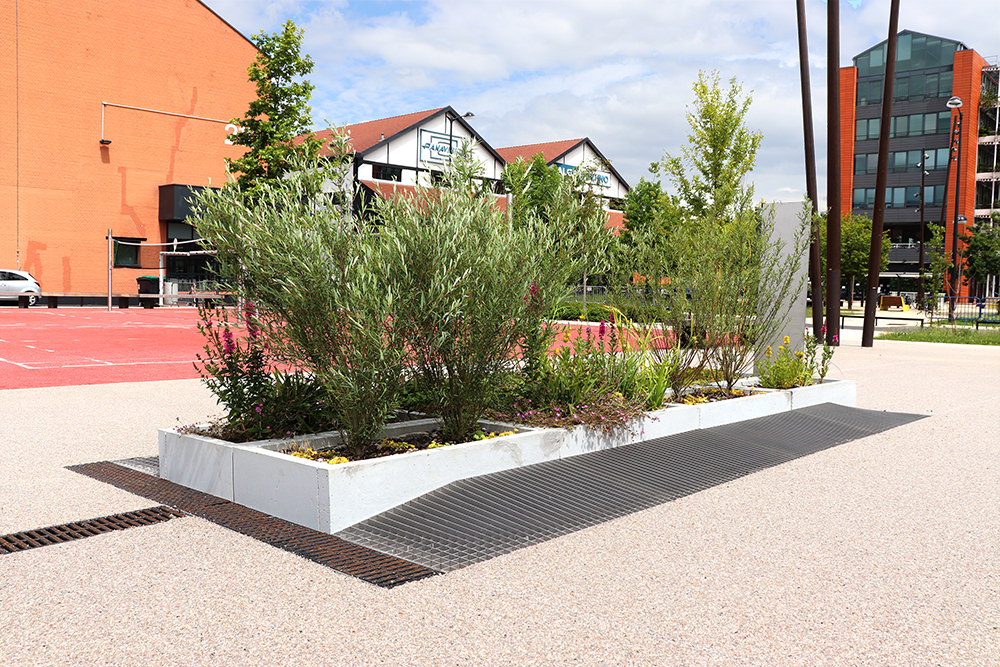
Final Message
Adaptation measures and technologies aimed at better preparing against the intensification of natural disasters are necessary to align with the climatic conditions we are facing today and in the foreseeable future; a study by the University of Chicago has estimated that Climate Change and its devastating impacts may cost $38 trillion a year by 2049. Our ultimate objective must however remain clear: to reverse global warming as a whole, not only its consequences. Our actions must drive lasting, positive change, not merely postpone the inevitable.
References:
- 2024 Spanish floods:
- 2024-2025 California Wildfires:
- 2023 Maui Wildfire:
- 2024 Hydra Wildfire:
- 2003 and 2022 European Heatwaves:
- 2025 Western Australia Heatwave:
- Flood figures:
- https://blogs.worldbank.org/en/climatechange/147-billion-people-face-flood-risk-worldwide-over-third-it-could-be-devastating
- https://www.eenews.net/articles/disasters-displaced-more-than-26-million-people-in-2023/
- https://www.swissre.com/risk-knowledge/mitigating-climate-risk/floods.html
- https://abcnews.go.com/International/libya-flooding-death-toll-storm-daniel/story?id=103143672&
- Global Warming and Natural Disasters link:
- https://www.ft.com/content/f17d09af-8f44-409a-b1dc-ad33a0792446
- https://www.un.org/sustainabledevelopment/blog/2015/11/un-report-finds-90-per-cent-of-disasters-are-weather-related/
- https://hdr.undp.org/content/climate-changes-impact-coastal-flooding-increase-five-times-over-century
- https://www.c2es.org/content/wildfires-and-climate-change/
- https://iris.who.int/bitstream/handle/10665/276405/9789241514972-eng.pdf

Written by Solar Impulse Foundation on May 15, 2025
